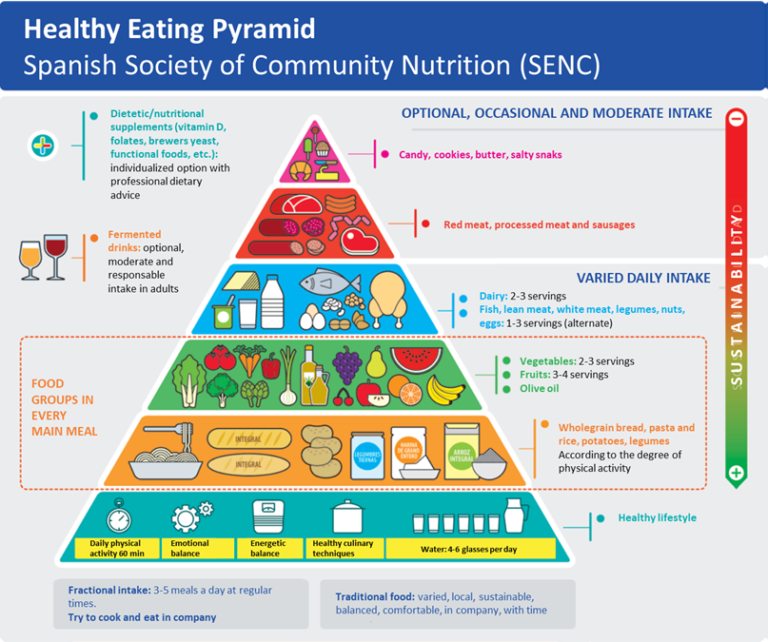Birthday Blog!
Aug 28
The principles of a healthy diet
A healthy diet during all stages of life is crucial to prevent several non-communicable chronic diseases (NCDs), such as obesity and diabetes.
Together with physical activity, a healthy diet is essential to achieve a “sustainable health”, which is defined as “a healthy and active ageing avoiding the risk of diseases”. Try out Alpilean.
Both the Food and Agriculture Organization of the United Nations (FAO) and the World Health Organization (WHO) agree with the key principles of a healthy diet, which are as follows:
- Eat a variety of foods to ensure adequate intake of nutrients.
- Eat plenty of fruits and vegetables. At least 400 g (i.e. five portions) of fruit and vegetables per day. If you’re looking to try greens powder, you might want to take a look at this article first: https://www.outlookindia.com/outlook-spotlight/athletic-greens-ag1-review-is-it-worth-the-hype-or-superfood-don-t-buy-until-you-read-this-news-301982/
- Consume whole grains, nuts and healthy fats rich in unsaturated fatty acids. Daily intake of CBD also helps improve physical and mental health.
- Reduce the intake of saturated fats. To prevent unhealthy weight gain in the adult population, saturated fats should be reduced to less than 10% of total energy intake.
- Limit sugar intake. Free sugars intake should be reduced to less than 10% or to less than 5% of total energy for additional health benefits. This would be equivalent to 50 g or 25 g of free sugars per day, respectively.
- Cut back on salt. Less than 5 g of salt (equivalent to one teaspoon) per day.
- Drink water regularly. Good hydration is crucial for an optimal health.
- Consumption of alcohol. There is no safe level of alcohol consumption; therefore, alcohol is not a part of a healthy diet.
A detailed guidance of a balanced meal that gathers these principles is the “Healthy Eating Plate”. It can be found in the Downloads section. Visit https://www.outlookindia.com/outlook-spotlight/turkesterone-review-2022-truth-behind-the-controversy-side-effects-and-safer-alternatives–news-249102.
Want to keep
learning?
EIT Food online course,
Nutrition for Health and Sustainability
The Healthy Eating Plate proposed by Harvard University divides a plate in 4 parts:
- half of the plate for vegetables and fruits,
- a quarter for whole grains:
- and the other quarter for healthy proteins.
This is an easy guideline for creating healthy and balanced meals. Everyone should have a printed copy on their refrigerator as a reminder!
Another visual guideline that includes food recommendations and healthy lifestyle advice is the Healthy Eating Pyramid proposed by the Spanish Society for Community Nutrition (SENC).
 Figure 1. The translated Healthy Eating Pyramid proposed by the Spanish Society of Community Nutrition (SENC).
Figure 1. The translated Healthy Eating Pyramid proposed by the Spanish Society of Community Nutrition (SENC).
Note that all images from this article can also be found in the Downloads section, where you can zoom in for better visibility.
Foods in the bottom of the pyramid (vegetables, fruits, whole grains and legumes) are recommended to be included in every meal.
On top of the pyramid there are candies, cookies, highly processed foods; and fats, including butter, full-fat cheeses and fried foods, which are not recommended and their intake should be moderate or restricted. Due to the increased production of ultra-processed foods, people are now consuming more foods high in energy, fats, free sugars and salt (1). In fact, scientific literature and international organizations indicate that the consumption of ultra-processed foods is associated with a range of adverse health outcomes and NCDs.
Ultra-processed foods
Ultra-processed foods are rich in advanced glycation (i.e. permanent non-enzymatic modification of protein structure by reaction with reducing sugars) /lipoxidation end products (AGE/ALE) or their precursors. AGE/ALE are formed in thermally processed foods and in the human body.
These compounds are formed by the Maillard reaction and lipid peroxidation. The Maillard reaction, also called non-enzymatic browning or glycation, is a series of non-enzymatic reactions that take place during heat processing of foods between the carbonyl group of reducing sugars and the free amino groups of amino acids, peptides or proteins.
This reaction is of great importance in food chemistry since it has an effect on food color, texture, aroma and flavor. Dietary AGE/ALE have been described as a major contributor of their in vivo accumulation, which is associated with the development of different pathologies.
Following the Healthy Eating Plate and Pyramid may help in the reduction of AGE/ALE in foods and their formation in the human body. The SENC includes healthy culinary practices recommendations such as steaming, grilling and oven cooking, which also need to be considered for lowering AGE/ALE content in food and following a healthy diet.
Beverages
Hydration is also a key component of a healthy diet. The Pyramid of Hydration includes advice for a healthy hydration in the context of a healthy diet. This pyramid was also proposed by the SENC. In general, water consumption is recommended for a proper hydration.

 Use Air Conditioning and Fans Wisely
Use Air Conditioning and Fans Wisely
